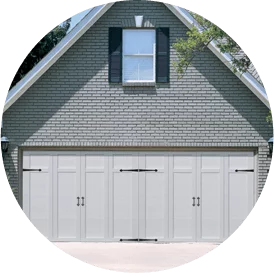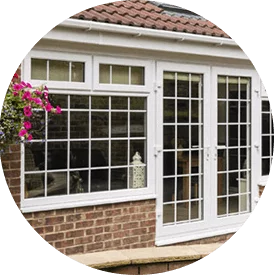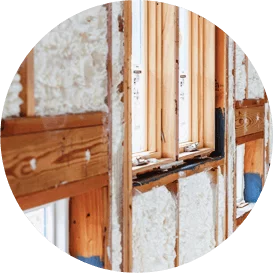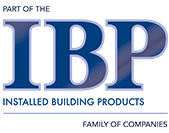- 5375 Williston Road, Williston, VT 05495
- Design Your Door
- Contact Us
- Pay Now
Frequently Asked Questions
See if we can answer your question
![]() Can I change the code on my keypad?
Can I change the code on my keypad?
![]() Can I print out directions to your showrooms?
Can I print out directions to your showrooms?
![]() I know you give free estimates on new/replacement doors and openers. How about estimates on service?
I know you give free estimates on new/replacement doors and openers. How about estimates on service?
![]() My transmitter will open the door, but when I try to close the door it only goes about 6 inches and then reverses, What is wrong?
My transmitter will open the door, but when I try to close the door it only goes about 6 inches and then reverses, What is wrong?
![]() What is your warranty?
What is your warranty?
![]() Can I buy a new clicker/remote at the shop?
Can I buy a new clicker/remote at the shop?
![]() Will you mail a new remote to me?
Will you mail a new remote to me?
![]() Im thinking of building a new home. When should I contact you?
Im thinking of building a new home. When should I contact you?
Garage Doors:
 Why should I consider an insulated door over a non-insulated door?
Why should I consider an insulated door over a non-insulated door?
 What is the difference between wood and steel doors?
What is the difference between wood and steel doors?
 What should I look for in a warranty?
What should I look for in a warranty?
 What design options are available?
What design options are available?
 Can I install the garage door myself?
Can I install the garage door myself?
 What if I have an unusual application?
What if I have an unusual application?
 What is the difference between extension and torsion springs?
What is the difference between extension and torsion springs?
 What are the standard sizes available for your residential garage doors?
What are the standard sizes available for your residential garage doors?
 Can I paint my garage door?
Can I paint my garage door?
Openers:
 What should I look for in an electric opener?
What should I look for in an electric opener?
 What additional features should I look for in an opener?
What additional features should I look for in an opener?
 What if I have a power outage?
What if I have a power outage?
To be a smart consumer:
 What else should I consider?
What else should I consider?
 To be a smart consumer, what should I avoid?
To be a smart consumer, what should I avoid?
Can I change the code on my keypad? [top] Yes, click here to find your keypad and detailed instructions on how to reset your code. If your keypad is not pictured, call our Service Department.
Can I print out directions to your showrooms? [top]
Maps and driving directions to our showrooms are available, click here.
I know you give free estimates on new/replacement doors and openers. How about estimates on service? [top]
Due to the fact that service and repair work involves a site inspection by a qualified field technician, we do charge a minimum service fee to diagnose equipment problems.
My transmitter will open the door, but when I try to close the door it only goes about 6 inches and then reverses. What is wrong? [top]
There are a few possible problems that might prevent your door from closing after you have opened it. Most commonly, the photo cells are out of alignment or there is an obstruction in the way of the photo cell safety beam.
What is your Warranty? [top]
New doors and motor operators are covered by a minimum one year warranty on material and workmanship. Several door and operators have extended material warranties beyond the first year. Service and repair work warranties are 90-days on parts and 30-days on labor.
Can I buy a new clicker/remote at the shop? [top]
Yes. Our showrooms carry an extensive selection of transmitters for garage doors openers. If your transmitter is no longer supported by the original equipment manufacturer, we can usually provide an after-market alternative.
Will you mail a new remote to me? [top]
Sure. We can ship a new transmitter (or any other parts) to any address.
I’m thinking of building a new home. When should I contact you? [top]
The sooner the better. We can help you select which products are best for you and help you with the dimensions.
Why should I consider an insulated door over a non-insulated door? [top]
The garage door is the largest moving object in your home, and if it is under insulated it could be the single largest drain of energy in your home If you have an attached garage, an insulated garage, or living space above the garage, your door should be well insulated. Insulation is expressed by R-value and is a measurement of thermal efficiency. The higher the expressed R-value, the more thermally efficient or better insulated the door. For example, the typical R-value for the walls of your house would be R-19 while the typical R-value for your ceiling would be R-32. R-values for insulated residential doors can range anywhere from R-4 to R-17. A replacement door should come with all-weatherseal, the same color as the door, to fit around the perimeter of the garage door opening. The all-weatherseal will form a tight seal between the garage door and the door jambs. Bottom weatherstrip (to seal between the door and the floor) should also be standard. Some doors also come with a gasket that fits in between or is built in between the sections to better seal the door.
What is the difference between wood and steel doors? [top]
All wood doors need to be painted to protect them form the weather. They come in unfinished Masonite panels and rough sawn (flat) panels These panels can be covered to create custom “carriage house” designs. Wood flush doors have an R value of R-4.6 before they are covered. A steel front, steel back “sandwich” insulated door is a superior constructed door with 25-gauge steel and high R-value It will be sturdier, quieter, and it will allow for the greatest R-value with the lowest maintenance. Steel doors come in several different colors pre-painted by the factory, and if one of those colors works for your application, you will not have to paint it. They can be insulated anywhere from R-4 to R-17 depending on the insulation, either polystyrene or polyurethane, with polyurethane offering the highest R-value. A standard steel door is made from 25-gauge steel and should come with a warranty to protect against rust through. Make sure you ask your sales representative the steel gauge and the R-value.
What should I look for in a warranty? [top]
Many manufacturers have a limited LIFETIME warranty, where they focus on the “Lifetime” and down play “Limited.” Usually, warranties will state “as long as you own your home,” and they won’t transfer to the next homeowner. For garage doors, a good standard warranty offers one year on materials/workmanship and labor. With a steel door you want a lifetime warranty against rust through. Some door warranties will specify that you must use their opener on the door or the door warranty will be void. So make sure you understand all the terms and conditions of the warranty before you make the purchase. For openers, the warranty is a little more important because they are more complex. A standard opener warranty would include a year on labor and materials/workmanship with a five (5) year motor warranty. A good warranty will give you three to five (3-5) years on materials/workmanship and a lifetime motor warranty. With any warranty, you can’t collect on it if the company goes out of business. A company with a proven track record and a standard warranty is worth more than a fly-by-night company promising the best warranty in the world. Make sure they can provide the service down the road.
What design options are available? [top]
Wood doors can be covered with wood material to create a “Carriage House Design.” Carriage doors consist of a regular flush panel wood door covered in cedar, alder, oak, etc… to meet your needs and desires. Steel doors come with a wood grain texture in either flush (flat) panel, the popular classic raised panel (squares), or ranch panel (long rectangles). White, brown, almond and sandstone are standard factory applied colors. If none of these colors work for you, the doors can be painted with an exterior latex paint. Windows and designs can be added for even greater “curb appeal.” Plain glass, vinyl designs or etched glass can be placed in any panel or section (usually one of the top two sections) to fit your needs. Mail slots, pet doors and even a pet window built into the bottom of the door can be added for your convenience.
Can I install the garage door myself? [top]
It is well worth the price to have a professional install your new door and take down and haul your old door away. Torsion springs require special tools and training to adjust, and if they are not handled properly they can cause severe injury or even death. Professional installers know what they are doing and already have the tools at their disposal to do the job right saving you time, money and headaches. The labor warranty will be voided if you install the door yourself, and warranties don’t cover damage done to the door as a result of improper installation if you install the door yourself. This is one instance where do-it-yourselfers should let a professional do it.
What if I have an unusual application? [top]
An unusual application can range from low headroom to an odd sized door to an uneven concrete floor.
- Low Headroom — doors can be installed with as little as 4-1/2 of headroom between the top of the jamb to the cieling with extension springs, 6-1/2 with torsion springs, and 9″ to include enough room for an opener. Standard headroom is 12″ and 15″ required for a door and opener.
- Odd sized door — doors come in a variety of standard sizes, many of which can be adapted to fit your application. Door sections are 17″, 19″, 21″, and 24″ tall (depending on the door series) and can be used to create an even greater number of heights. For widths, wood doors can be cut down to fit almost any size opening, and steel doors can even be special ordered to fit an odd width. Standard widths are 8′, 9′, and 16′. Standard heights are 7′, and 8′.
- Uneven concrete floors — sometimes a house may settle or a contractor may make a mistake leaving you with an uneven concrete floor. If the imperfection in the floor is minor, the bottom weatherseal, on the door may seal it. If the imperfection is major, a wood door can be “scribed” to fit the uneven floor or a “sweep” can be applied to help seal a metal door.
If you have an unusual application you should have a professional sales representative visit the job and tell you what can be done. Chances are, he or she has worked with your type of application before, and can offer valuable suggestions.
What is the difference between extension and torsion springs? [top]
Springs counterbalance the weight of a door and actually lift the door. Extension springs run parallel to the track to help the door raise and lower. When the door is down, the springs extend. When the door is up they contract. Over time these springs stretch out offering the opener less help with opening the door. Extension springs work independently of each other and wobble back and forth causing more uneven wear on your door parts. Torsion springs are located above the door opening and generally work together as a pair providing smooth and even operation. They are the superior spring as they are more precisely gauged for the size and weight of your door. Torsion springs offer more control over the door when raising and lowering and are safer than extension springs when they break as they are “contained” on the torsion bar.
What are the standard sizes available for your residential garage doors? [top]
In general, standard sizes for door widths are 8′, 9′ 10′, 12′, 15′, 16′, 18′ and 20′. Some door series may have exceptions to this rule. Check with your Overhead Door distributor about the availability of specific sizes or custom width doors.
Can I paint my garage door? [top]
The door and trim surfaces can be painted using high quality exterior acrylic latex pain. A flat, satin or semigloss paint may be used. Following the guidlines from the pain manufacturer allow adequate drying time prior to aplying a second coat if necessary. (DO NOT use an oil based paint on the door or trim surfaces).
What should I look for in an electric opener? [top]
When looking at openers you need to consider three things: strength, safety and security. Openers come in two strengths: 1/3 horse power or 1/2 horse power. Safety is very important on openers to protect people and pets from being injured. Any opener should come with at least these three safety features.
- Safe-T-Beam — photocells at the botom of the door shoot an invisible Safe-T-Beam across the opening. If this invisible Safte-T-Beam is broken, while the door is closing, the door will reverse.
- Contact Reverse — the opener should reverse when the door comes in contact with an object, even if the Safe-T-Beam is not broken. The industry standard is to have the door reverse off of a 2×4 laying flat on the floor.
- Timed Reverse — the opener should automatically stop and reverse when the door is closing if it fails to close completely within 30 seconds.
For security, openers should have a locking feature that prevents thieves from opening the door by hand while the opener is attached. Another security feature is rolling code technology. This allows the code sent to you opener to roll and change every time you use your handheld transmitter, utilizing billions of different code combinations. High-tech thieves will be unable to duplicate your code to break into your home.
What additional features should I look for in an opener? [top]
Residential openers come in for different types: Chain Glide, screw drive, belt drive, and side mount. A Chain Glide opener is the most popular type. It uses an alternating current (AC) motor and chain to operate the door. A screw drive opener is quieter using either an AC motor or a dirrect current (DC) motor and a screw system to operate the door. A DC motor keeps a constant electrical current running through the motor producing softer stops and starts. The belt drive opener is the quietest using a DC motor, and a Kevlar belt to operate th door. Kevlar, ounce per ounce, is five times stronger than steel. The side mount opener is used in special cases where there is not enough room for a regular opener. It uses an AC motor and a direct drive chain system to open and close the door from the side. The Kevlar belt drive is the quietest and requires the least amount of maintenance as both the Chain Glide and screw drive will require lubrication.
What if I have a power outage? [top]
Openers have a safety release cord that can be pulled to disconnect your door from your opener and operate the door by hand if you have a power outage. Openers are a great convenience, but you should never use them as your sole means of getting into your home. If you have a power outage you won’t be able to get into your home through the garage unless you have an emergency key discconect that allows you to use a key to disconnect the door from the opener from outside of the garage.
What else should I consider? [top]
Service!!! Even if you’re interested in buying a door and/or opener but not fixing your old one, service should be a major consideration on your new door and opener too. Your new door and opener should last a very long time, probably as long as you own your home. You want to select a company that provides excellent service on their products and carries an extensive selection of replacement parts in their service department. This will be important if you ever have to call that company back for warranty work, and also if you need something adjusted ten years down the road. Look for a company that has been providing good service in your area for a long time. Call the Better Business Bureau. Ask you friends who they use. Look for a compnay involved in your community. These are all indicators that the compnay has been in business for a long time, plans on being around for a long time, plans on being around for a long time and can help you now and through the future.
To be a smart consumer, what should I avoid? [top]
- Companies with no track record promising “too good to be true” warranties. These are companies who plan on making their money now and skipping town before you call them on that “lifetime” warranty.
- Companies who use more than one name. No, this practice is not illegal, but it is a strategy often used to deceive customers and avoid warranty follow-up.
- Companies who will only warranty their door if you use their opener. It is possible for an opener that has been poorly installed to damage a door, but that wouldn’t be covered under their warranty anyway.
- Companies who are not members of the Better Business Bureau or local Chamber of Commerce.
- Companies who “subcontract” their labor. Who are you going to call for your warranty work? Is the subcontractor insured? If you don’t know who is going to your home it is hard to do a background check.
- Companies who are not insured. Make sure the company has proper Liability Insurance and Workman’s Compensation insurance.
- Companies who don’t have clearly marked vehicles and uniformed employees. If they aren’t proud enough of their name to identify themselves how can you expect a professional outcome?
- Companies who don’t offer a FREE written estimate. A sales representative should be experienced enough to know exactly what they need to complete the job to your specifications before any work begins and be willing to put it in writing.

Need garage door or opener repair? Overhead Door Co. of Burlington can help.

Beautiful & durable, our interior and exterior door products are sure to impress.

No matter your commercial garage door needs, Overhead Door Co. of Burlington has you covered.

From locks to handles, Overhead Door Co. of Burlington can meet your door hardware needs



















